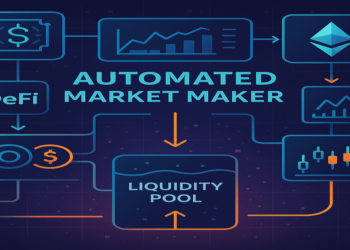Cryptocurrency mining has become one of the hottest topics in the financial and tech worlds. But what exactly is it? How are new coins like Bitcoin, Ethereum, and others created? In this article, we’ll break down the complex cryptocurrency mining process into simple, easy-to-understand steps, highlighting its purpose, mechanics, and impact on the blockchain ecosystem.
What Is Cryptocurrency Mining?
Cryptocurrency mining is the process of creating new digital coins and verifying transactions on a blockchain network. It involves solving complex mathematical problems that secure the network and confirm its transactions. Miners, the individuals or entities performing this task, are rewarded with cryptocurrency tokens for their efforts, making mining a critical and incentivized activity.
How Cryptocurrency Mining Works?
Step 1: Transaction Validation
When someone makes a cryptocurrency transaction, it is broadcast to the network and added to a pool of unconfirmed transactions. Miners gather these transactions to validate and add them to the blockchain.
Step 2: Solving Cryptographic Problems
Miners compete to solve a cryptographic puzzle, a process called “proof of work” (PoW). The first miner to solve the puzzle wins the right to add a new block of transactions to the blockchain.
Step 3: Block Addition
Once a miner solves the puzzle, the new block is added to the blockchain, and the network confirms its legitimacy. This ensures all transactions are secure and irreversible.
Step 4: Mining Rewards
Miners are rewarded with newly minted cryptocurrency coins and transaction fees for their work. This process provides an incentive to maintain and secure the blockchain.
Types of Mining
CPU Mining
Using a computer’s central processing unit, CPU mining is the most basic method. However, it has largely become obsolete due to its inefficiency and low profitability.
GPU Mining
Graphics processing units (GPUs) are faster and more efficient for mining. They can handle parallel processing, making them ideal for solving cryptographic puzzles in cryptocurrency mining.
ASIC Mining
Application-Specific Integrated Circuits (ASICs) are specialized hardware designed exclusively for mining. Although expensive, they are incredibly efficient and dominate many mining operations.
Cloud Mining
Cloud mining allows users to rent mining power from data centers. It’s a popular option for those who want to participate without investing in expensive hardware.
Environmental Impact of Mining
Cryptocurrency mining requires a significant amount of computational power, which translates into high energy consumption. This has raised concerns about its environmental impact. However, innovations like renewable energy-powered mining and alternative consensus mechanisms, such as proof of stake (PoS), are addressing these challenges.
Is Cryptocurrency Mining Profitable in 2024?
Mining profitability depends on factors like electricity costs, mining hardware efficiency, and the cryptocurrency being mined. While some coins remain profitable to mine, others have shifted to different consensus mechanisms, making mining less accessible to average users.
Future of Cryptocurrency Mining
As cryptocurrencies evolve, so does mining technology. With the shift towards eco-friendly solutions and innovations in hardware, the future of mining will likely focus on efficiency and sustainability.
Conclusion
Cryptocurrency mining is the backbone of decentralized networks, enabling secure transactions and the creation of new coins. While it has its challenges, mining continues to play a vital role in the blockchain ecosystem. Whether you’re considering mining yourself or just curious, understanding this process is crucial to grasping the full potential of cryptocurrencies.














